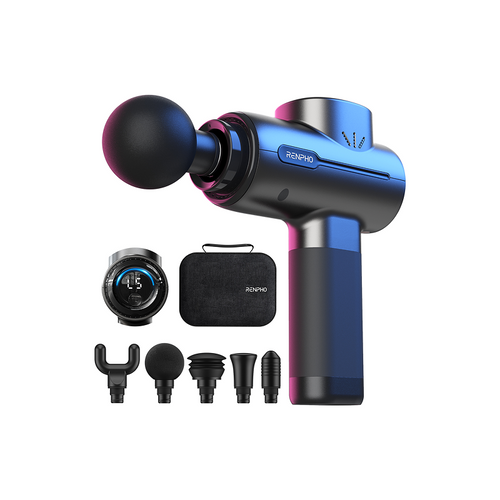How Massage Guns Can Help Alleviate Plantar Fasciitis Discomfort
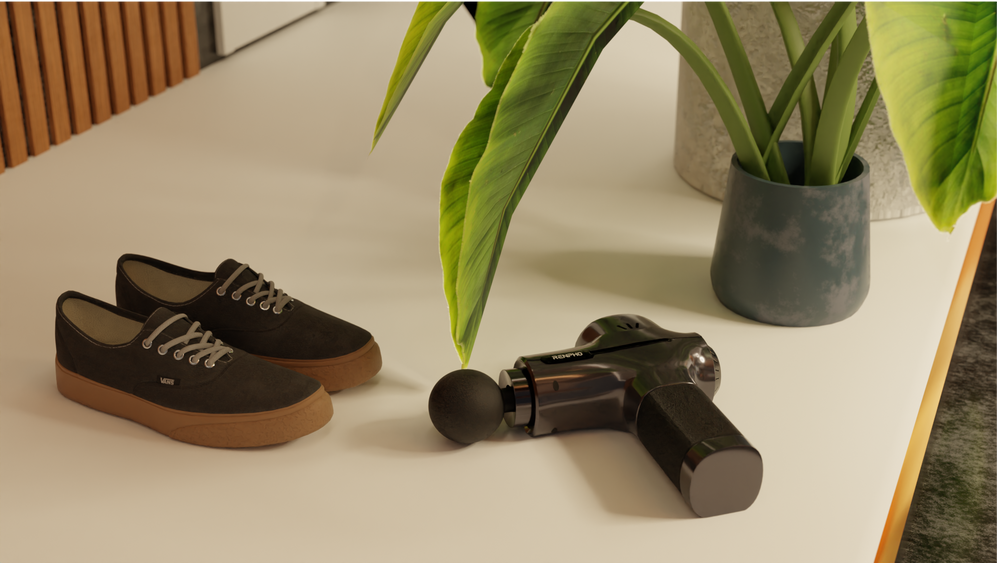
Stay tuned to our latest news
While there are various treatment options available, one innovative tool has gained significant attention for its potential to provide relief: massage guns. These handheld devices, originally popular among athletes and fitness enthusiasts, are now being recognized for their therapeutic benefits in managing plantar fasciitis discomfort.
So, we will explore how massage guns can help alleviate plantar fasciitis discomfort and discuss their effectiveness as a treatment option. Whether you're a professional athlete, a fitness enthusiast, or simply someone seeking relief, we aim to equip you with the knowledge you need to make an informed decision about incorporating massage guns into your recovery routine. Without further ado, let's dive in and discover the potential of massage guns in alleviating plantar fasciitis discomfort.
What Is Plantar Fasciitis?

As briefly mentioned before, plantar fasciitis is a common condition that causes pain and inflammation in the heel and bottom of the foot. This condition occurs when the plantar fascia, a thick band of tissue that connects the heel bone to the toes, becomes irritated or damaged. It often develops gradually and is most seen in adults between the ages of 40 and 60, although it can affect people of all ages.
The treatment for plantar fasciitis typically involves a combination of rest, stretching exercises, physical therapy, and the use of orthotic devices or shoe inserts to provide additional support to the foot. In more severe cases, medications or steroid injections may be recommended, and in rare cases, surgery may be necessary to relieve the pain and restore normal function to the foot. Early intervention and proper treatment can help alleviate the symptoms of plantar fasciitis and prevent further complications.
What Causes Plantar Fasciitis?
One of the main causes of plantar fasciitis is overuse or overstretching of the plantar fascia. This can result from engaging in activities that put excessive strain on the foot, such as running, jumping, or standing for prolonged periods. When the fascia is overstressed, microtears can occur, leading to inflammation and pain.
Inadequate shoe support is another factor that can contribute to plantar fasciitis. Wearing shoes lacking proper cushioning and arch support can put additional strain on the plantar fascia, leading to inflammation and pain. This is especially true for individuals with high arches or flat feet, as their foot mechanics are already predisposed to excessive stress on the fascia.
Being overweight or obese can also increase the risk of developing plantar fasciitis. The excess weight places additional pressure on the plantar fascia, making it more prone to inflammation and injury.
Tight calf muscles can also contribute to plantar fasciitis. When the calf muscles are tight, they can cause increased tension on the plantar fascia. This can alter the mechanics of the foot, leading to strain and inflammation of the fascia.
What Are the Symptoms of Plantar Fasciitis?
Concerning symptoms, the most common one is heel pain, particularly heightened in the morning or after periods of rest. This pain is typically described as a sharp, stabbing sensation that radiates from the bottom of the heel. The pain may also be present in the arch of the foot.
Apart from heel and arch pain, plantar fasciitis can also cause swelling and tenderness in the heel area, especially noticeable when touching the affected area or when walking or standing for long periods of time.
Another symptom of plantar fasciitis is difficulty walking or standing for extended periods. This is due to the pain and discomfort caused by the inflammation in the plantar fascia.
Can Massage Guns Help Relieve Plantar Fasciitis?

While massage guns have gained popularity as a tool for pain relief and muscle recovery, their benefits extend to potentially providing relief for individuals suffering from plantar fasciitis. Their deep tissue massage feature, in particular, proves effective in addressing the underlying causes of plantar fasciitis.
The repetitive and powerful percussive motions can penetrate deep into the muscles, promoting better blood flow. By increasing blood circulation, the massage gun aids in reducing inflammation, which is often associated with the symptoms of plantar fasciitis. The increased blood flow also helps in delivering essential nutrients and oxygen to the affected area, accelerating the healing process.
Moreover, they can specifically target the plantar fascia and the surrounding muscles. The plantar fascia, a thick band of tissue that runs along the bottom of the foot, may become inflamed and tense in individuals with plantar fasciitis. By focusing on this area, a massage gun can help relax the tight fascia and provide relief from the resulting pain.
How to Use a Massage Gun for Plantar Fasciitis?

Among the numerous available treatment options, using a massage gun stands out as an effective method. A massage gun is a handheld device that uses percussive therapy to target deep tissues and muscles. It provides quick and effective relief by improving blood circulation, reducing inflammation, and promoting relaxation. In this guide, we will explore how to correctly use a massage gun to alleviate symptoms of plantar fasciitis and promote healing.
-
Preparing to Use a Massage Gun
When preparing to use a massage gun for plantar fasciitis, it's important to take a few key steps to ensure that you have a safe and effective experience. Here are some guidelines to follow:
- Consult with a healthcare professional: Before using a massage gun, particularly if you have plantar fasciitis, it's advisable to consult with a healthcare professional such as a physical therapist, sports medicine specialist, or a podiatrist. They can assess your condition and provide specific recommendations on how to integrate a massage gun into your treatment plan.
- Choose the right massage gun: There are numerous massage guns available in the market, each with different features and intensity levels. When selecting a massage gun for plantar fasciitis, look for one that offers adjustable speed settings and attachments that are suitable for foot massage. Additionally, consider the weight and ergonomics of the device to ensure comfortable and easy handling.
- Read the user manual: Familiarize yourself with the user manual of the massage gun you have chosen. Pay close attention to the instructions regarding usage, safety precautions, and any specific recommendations for using the device on the feet or for plantar fasciitis. Following the manufacturer's guidelines will help you use the massage gun correctly and avoid any potential injuries.
- Prepare the area: Before starting the massage, make sure the area where you'll be using the massage gun is clean and free from any obstacles. Sit in a comfortable position with your foot exposed and supported. You may want to sit on a chair or couch and prop your foot up on a cushion or a pillow to elevate it.
- Warm-up and stretch: It's generally beneficial to warm up your foot and perform some gentle stretching exercises before using the massage gun. This helps to increase blood flow, relax the muscles, and prepare them for the massage. Simple exercises like ankle rotations, toe curls, and calf stretches can be helpful in this regard.
-
Using the Massage Gun
Using a massage gun for plantar fasciitis can provide targeted relief and help alleviate pain and discomfort. Here's how you can effectively use a massage gun for this condition:
- Apply lubricant: To ensure smooth gliding of the massage gun and reduce friction, consider applying a small amount of massage oil or lotion to the affected area. This can help prevent any discomfort that may arise from direct contact between the massage gun and your skin.
- Choose the appropriate attachment: Most massage guns come with a variety of interchangeable attachments. For plantar fasciitis, it's generally recommended to use a softer attachment, such as a round or flat head. These attachments provide a gentler massage and are suitable for targeting specific areas on the foot.
- Position the massage gun: Hold the massage gun firmly and position it at the starting point of the plantar fascia, which is the heel. Apply gentle pressure and slowly move the massage gun along the length of the foot, following the path of the plantar fascia towards the toes. Be sure to cover the entire area, focusing on any particularly tender points.
- Control the speed and intensity: Start with the lowest speed setting on the massage gun and gradually increase it as needed. Pay attention to your comfort level and adjust the speed accordingly. It's important to apply enough pressure to feel the massage, but avoid pressing too hard, as excessive pressure can cause discomfort or worsen the condition.
- Maintain a steady pace: Move the massage gun in a slow and controlled manner, allowing the vibrations to penetrate the tissues and provide relief. Avoid rapid or jerky movements, as this can be less effective and potentially uncomfortable.
- Target other muscles: While the plantar fascia should be the focus, it can be beneficial to target surrounding muscles as well. These may include the calf muscles, Achilles tendon, and the muscles on the top of the foot. By addressing these areas, you can help release tension and improve overall foot function.
- Duration and frequency: Start with shorter sessions of around 5-10 minutes and gradually increase the duration as your body adapts. It's generally recommended to use the massage gun for plantar fasciitis once or twice a day. However, always listen to your body and adjust the frequency and duration based on your comfort level.
-
Aftercare Tips for Plantar Fasciitis Relief
After using a massage gun for plantar fasciitis, it's important to follow some aftercare tips to maximize the benefits and promote further relief. Here are some suggestions:
- Stretching exercises: Perform gentle stretching exercises for the feet and calves after using the massage gun. This helps maintain flexibility and prevent muscle tightness. Focus on stretching the calves, Achilles tendon, and the plantar fascia itself. Consult with a healthcare professional for specific stretches suitable for your condition.
- Ice therapy: Applying an ice pack or an ice massage to the affected area can help reduce inflammation and provide pain relief. Use a cold pack or wrap ice cubes in a towel and apply it to the heel and arch of the foot for about 15-20 minutes. Repeat this a few times a day, especially after using the massage gun.
- Rest and elevate: Give your feet ample rest and elevate them whenever possible. Elevating the feet helps reduce swelling and promotes circulation. Try to keep your feet elevated above the level of your heart whenever you're sitting or lying down.
- Supportive footwear: Wear supportive shoes that provide proper arch support and cushioning. Avoid walking barefoot or wearing unsupportive footwear, as it can strain the plantar fascia. Consider using orthotic inserts or shoe inserts recommended by your healthcare professional to provide additional support.
- Avoid high-impact activities: Minimize or avoid activities that put excessive stress on the feet, such as running or jumping. Opt for low-impact exercises like swimming or cycling, which are gentler on the plantar fascia.
- Maintain a healthy weight: Excess weight can put additional strain on the feet and exacerbate plantar fasciitis symptoms. Maintain a healthy weight through a balanced diet and regular exercise to reduce the burden on your feet.
- Follow treatment plan: If you're undergoing other treatments for plantar fasciitis, such as physical therapy, stretching exercises, or orthotic devices, continue following the recommendations of your healthcare professional. The massage gun can be a complementary tool, but it should not replace a comprehensive treatment plan.
- Monitor your progress: Keep track of how your symptoms are improving or changing over time. If you notice any worsening of symptoms or if the massage gun is not providing the desired relief, consult with your healthcare professional for further evaluation and adjustments to your treatment plan.
How to Safely Use a Massage Gun for Plantar Fasciitis?

It is essential to understand how to safely use a massage gun to avoid exacerbating the symptoms of plantar fasciitis. By following a few guidelines and taking necessary precautions, individuals can effectively use a massage gun to alleviate the pain associated with plantar fasciitis while minimizing the risk of further injury.
-
Avoid Bony Areas
When using a massage gun for plantar fasciitis, it is crucial to avoid massaging over bony areas. The bony regions of the foot, such as the heel and toes, are particularly vulnerable and prone to injury. Massaging these areas can lead to additional irritation and discomfort, exacerbating the symptoms of plantar fasciitis.
The plantar fascia, a thick band of tissue that runs along the bottom of the foot, already experiences stress and strain in individuals with plantar fasciitis. Applying pressure or massaging too hard on the heel or toes can further aggravate this delicate tissue. The plantar fascia can become easily irritated and inflamed, causing increased pain and discomfort.
The heel, being a common site of plantar fasciitis, is especially sensitive. Excessive pressure or massage on the heel can cause micro-tears in the plantar fascia, further weakening the tissue and hindering the healing process. Similarly, massaging the toes too vigorously can lead to inflammation and irritation of the plantar fascia, as well as potential dislocation or strain of the toe joints.
-
Avoid Overusing the Device or Applying Too Much Pressure
When using a massage gun, it is crucial to take precautions to avoid overusing the device or applying excessive pressure. Overusing or exerting too much pressure can have adverse effects, including further inflammation and increased pain.
To prevent these complications, it is recommended to use the massage gun in brief intervals rather than continuously. Using it for short periods, typically around 15 minutes at a time, allows the body to adjust and prevents the muscles from becoming overworked. It is also essential to give the body enough time to rest between sessions.
Additionally, it is vital to use the massage gun with light pressure. Applying too much force can traumatize the already inflamed muscles or tissues, leading to more pain and discomfort. Therefore, it is advisable to start with the lowest intensity setting and gradually increase the pressure if needed, following the comfort level of the individual.
Using the massage gun in short bursts and with light pressure ensures that the device provides its therapeutic benefits while minimizing the risk of further injury or inflammation. By following these precautions, individuals can experience the relaxation and pain relief that a massage gun offers without any unwanted side effects.
-
Avoid Using the Massage Gun if You Have Medical Conditions
When using a massage gun, it is important to take certain precautions and considerations, particularly if you have any pre-existing medical conditions. Conditions such as diabetes, heart disease, and arthritis can significantly affect the body's response to percussion therapy, and seeking advice from a medical professional is crucial.
Firstly, individuals with diabetes should exercise caution when using a massage gun. Diabetes can lead to peripheral neuropathy, a condition that affects the nerves in the extremities. Vigorous percussion therapy may increase the risk of injury or exacerbate existing nerve damage. It is advisable to consult with a physician before using a massage gun to ensure it is safe for you.
Secondly, for those with heart disease, a massage gun's intense percussions can potentially strain the cardiovascular system. Certain techniques involving deep tissue massages and high speeds can elevate heart rate and blood pressure, making them unsuitable for individuals with compromised cardiac health. A medical professional can provide guidance on whether and how to use a massage gun safely.
Lastly, individuals with arthritis should also approach percussive therapy with caution. Arthritis causes inflammation and joint pain, and the forceful vibrations of a massage gun may aggravate these symptoms. Seek advice from a medical professional to determine the appropriate settings and techniques that can provide relief without worsening the condition.
-
Avoid Open Wounds or Cuts on Your Feet
When using a massage gun to alleviate the discomfort caused by plantar fasciitis, it is crucial to avoid applying the device over any open wounds or cuts on your feet. This cautionary measure is of utmost importance as it can help prevent potential complications and ensure a safe and effective treatment.
Open wounds or cuts on the feet provide a direct pathway for bacteria and other pathogens to enter the body. When a massage gun is used over these areas, there is a risk of pushing those harmful microorganisms deeper into the tissues. This can lead to infection, which may prolong the healing process and worsen the symptoms of plantar fasciitis. Moreover, the repetitive motion and pressure from the massage gun can further aggravate the inflammation, causing increased pain and discomfort.
Inflammation is a hallmark of plantar fasciitis, and by massaging over open wounds or cuts, you are risking exacerbating this inflammatory response. The massage gun's stimulation can potentially irritate the already inflamed tissues, causing a flare-up of symptoms, such as swelling and tenderness.
To prevent these risks, it is imperative to thoroughly inspect your feet before using a massage gun. If you notice any open wounds or cuts, it is recommended to avoid direct contact with the affected areas. Instead, focus on massaging the surrounding healthy tissues to promote blood flow and relieve tension in the plantar fascia.
By following this precaution and prioritizing the health of your feet, you can ensure a safe and effective massage gun therapy for plantar fasciitis while reducing the risk of infection and exacerbation of inflammation.
Takeaway
When it comes to dealing with plantar fasciitis, there are many possible solutions available and a massage gun is one of them. Make the necessary preparations, use the device properly, and take note of what to do after using it to ensure relief.
Moreover, avoid overusing the massage gun or applying too much pressure. Don’t use it on bony areas, open wounds or cuts, and to consult a medical professional if you have any health condition.
Renpho Health Tips
-

The Joy of Gardening: Cultivating Happiness and Wellness
March 5, 2024
Read more >
-

5 Common Issues with Fascial Guns and How to Fix Them
February 28, 2024
Read more >
-
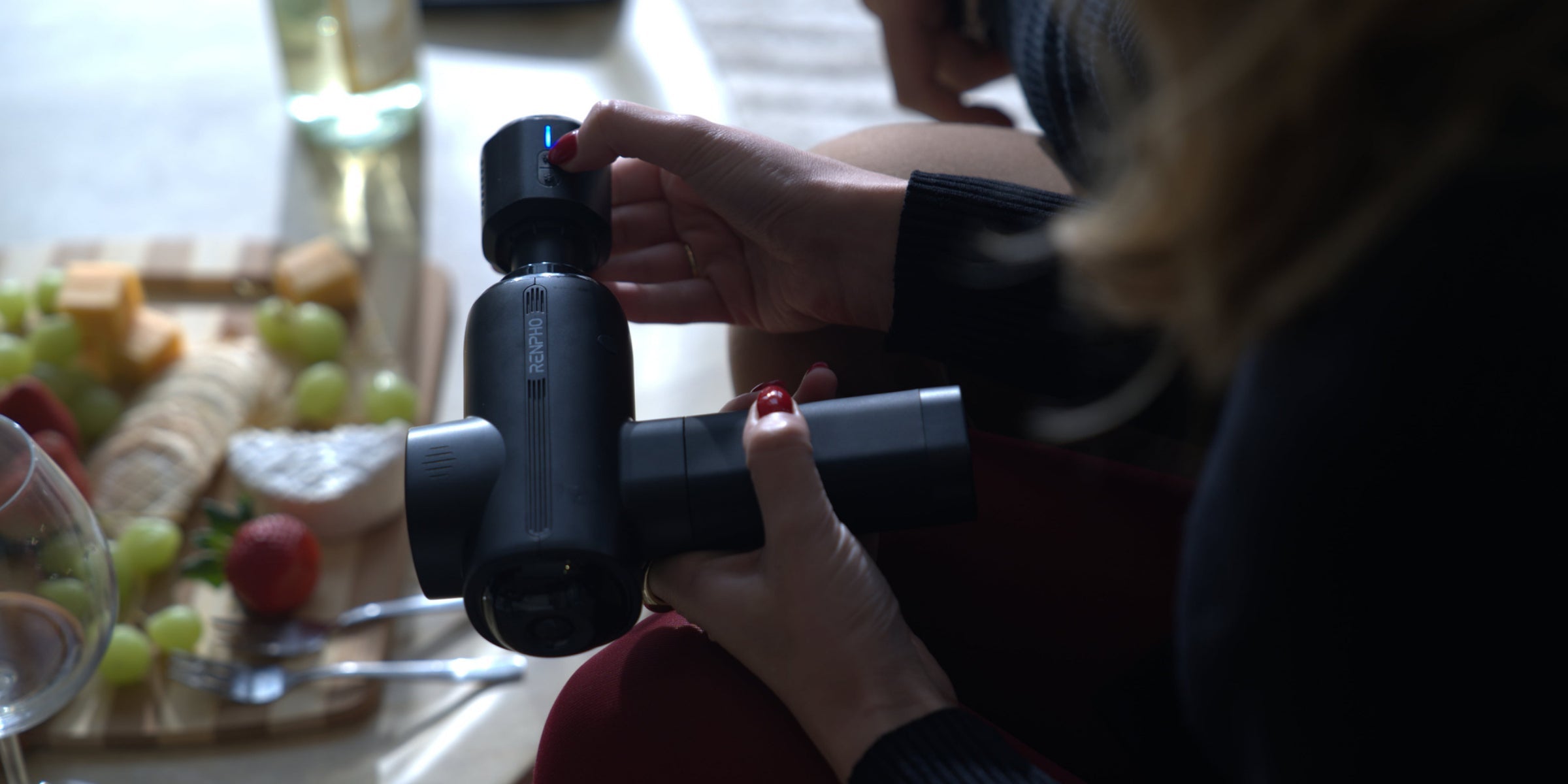
5 Ways to Beat the Winter Blues with a Heated Massage Gun
February 22, 2024
Read more >
-
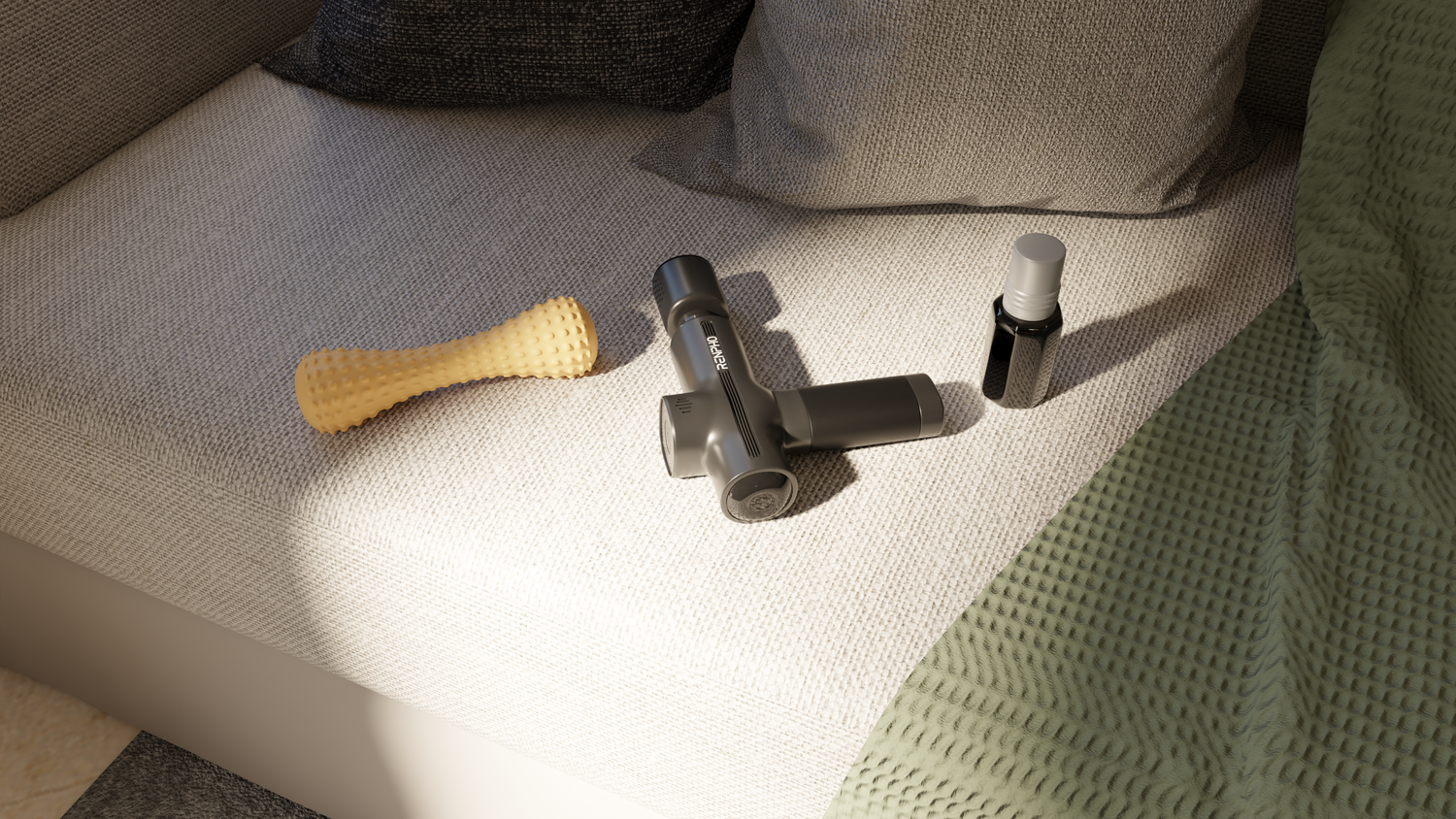
DIY Foot Reflexology: 5 Simple Techniques for Home Practice
February 21, 2024
Read more >
-
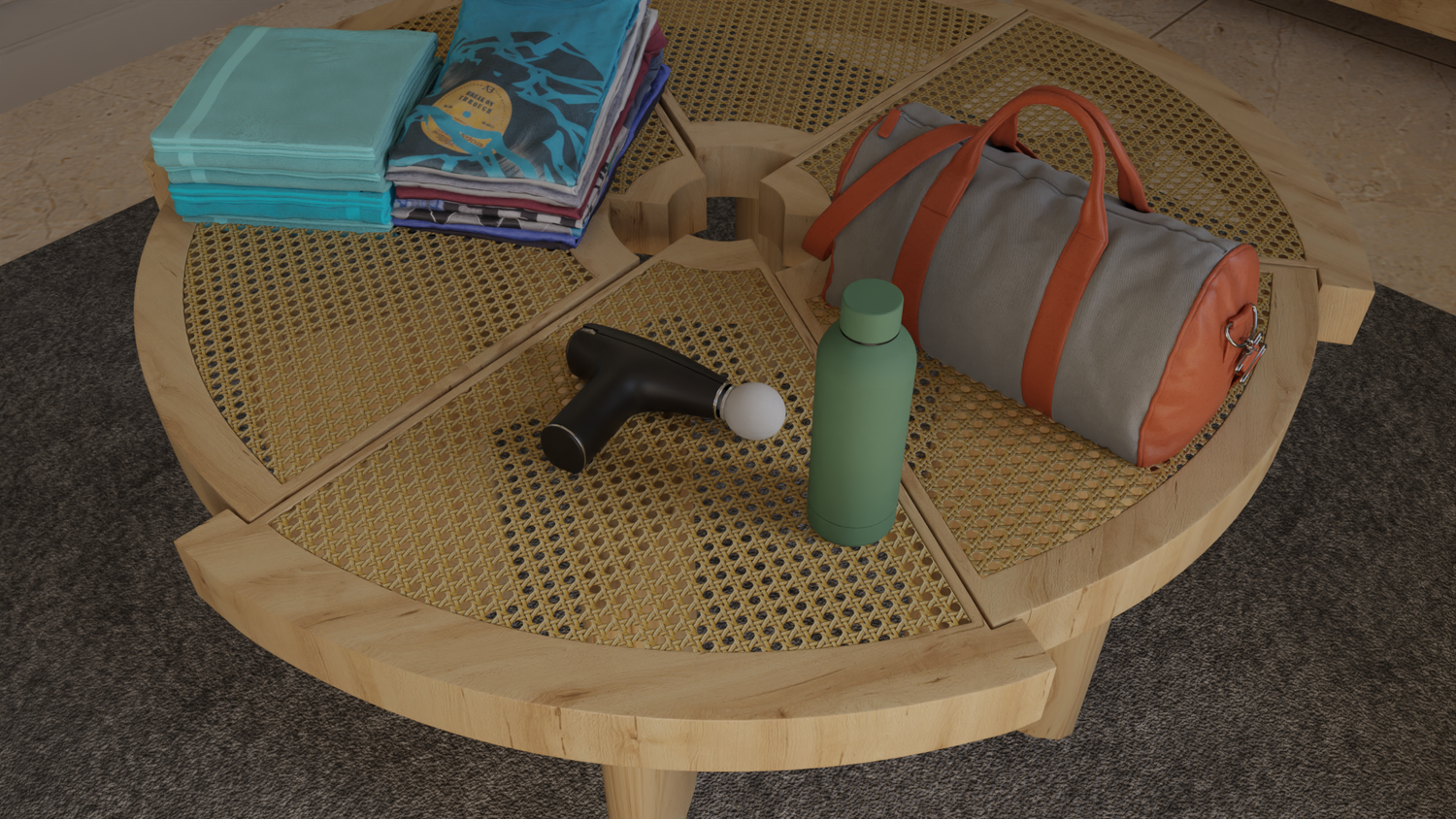
Massage Therapy on the Move: How to Choose the Ideal Travel-Friendly Massage Gun
February 21, 2024
Read more >


